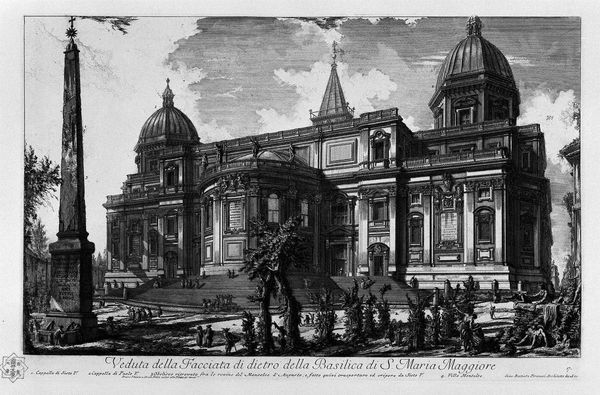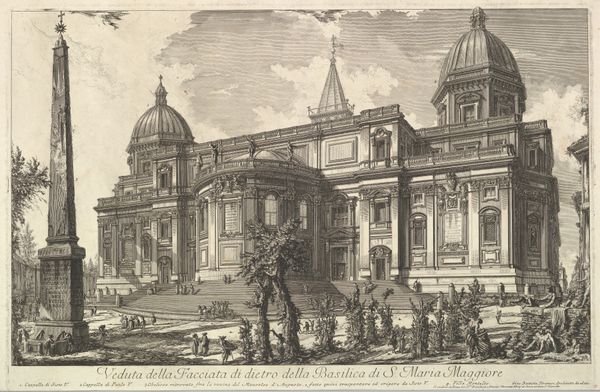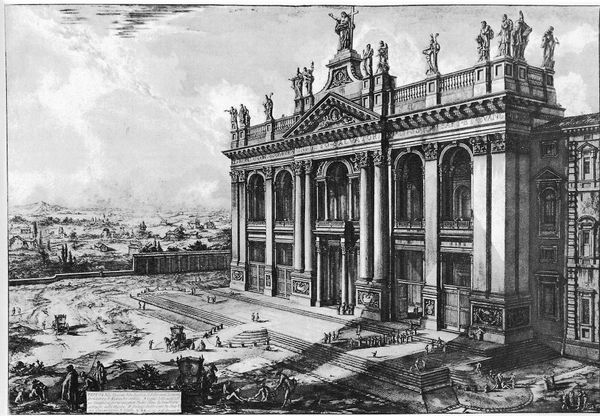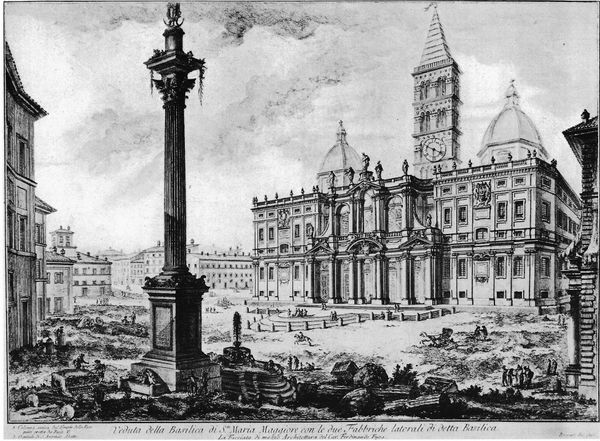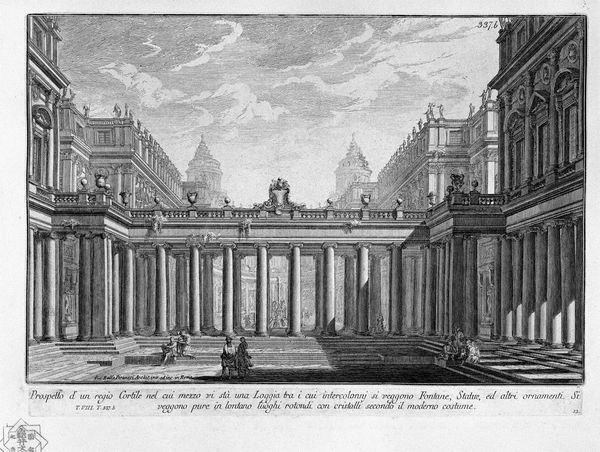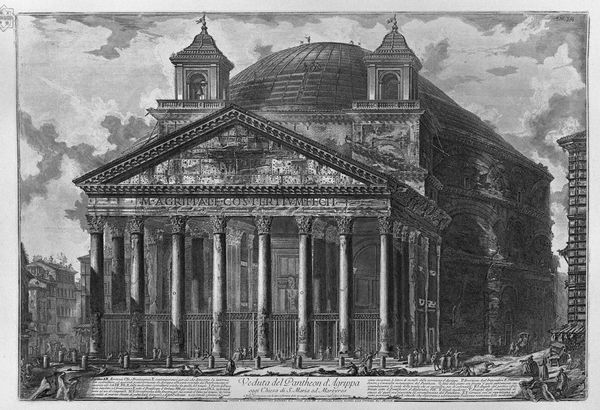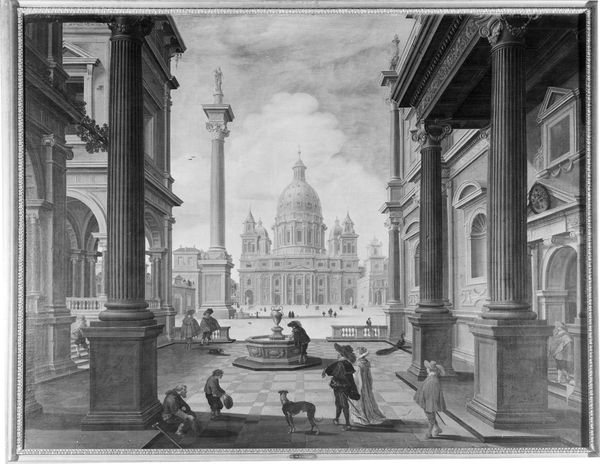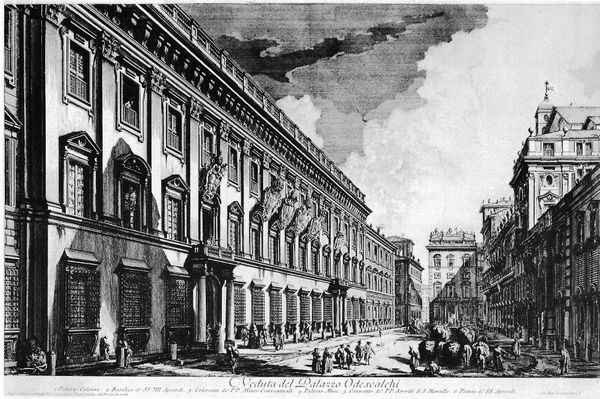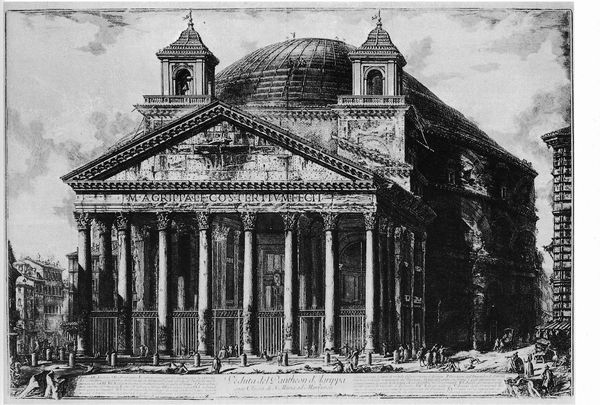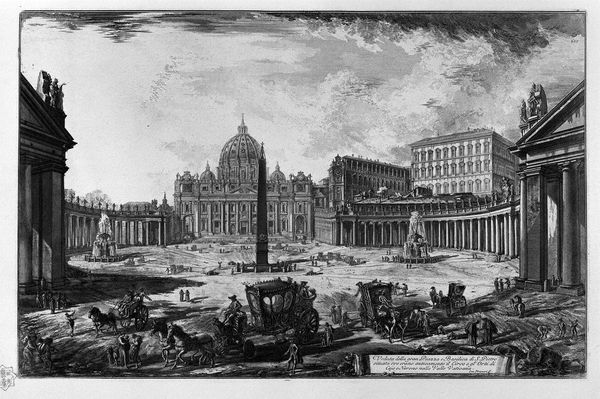
print, etching, engraving, architecture
#
neoclacissism
#
baroque
# print
#
etching
#
charcoal drawing
#
cityscape
#
history-painting
#
italian-renaissance
#
engraving
#
architecture
Copyright: Public domain
This is Vedute di Roma, one of many etchings of Rome made by Giovanni Battista Piranesi in the mid-18th century. Piranesi mastered the art of etching, using a metal plate covered with wax, drawing through it to expose the metal, then bathing it in acid. What's remarkable is the intense labor involved in creating this image. Piranesi made hundreds of precise marks, building up tones and textures to capture the grandeur and decay of Roman architecture. The material itself, the metal plate, allowed for intricate detail and tonal variation that would have been impossible with other methods. These weren't just architectural studies; they were commodities, sold to tourists and collectors as souvenirs. Think of it: these prints brought the monumental structures of Rome into the homes of people across Europe. Piranesi's Vedute, then, blurred the boundaries between art, commerce, and cultural exchange. They show how skilled handwork could both celebrate and participate in the emerging market economy.
Comments
No comments
Be the first to comment and join the conversation on the ultimate creative platform.
